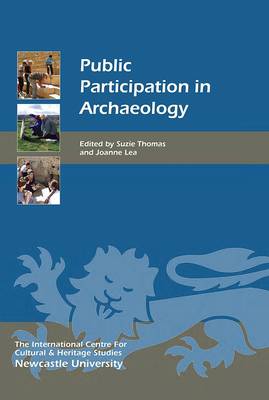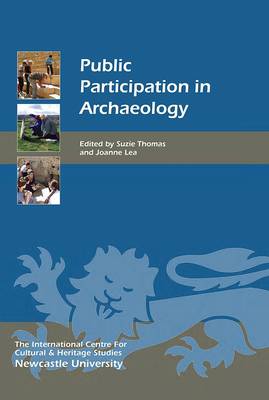
- Retrait gratuit dans votre magasin Club
- 7.000.000 titres dans notre catalogue
- Payer en toute sécurité
- Toujours un magasin près de chez vous
- Retrait gratuit dans votre magasin Club
- 7.000.000 titres dans notre catalogue
- Payer en toute sécurité
- Toujours un magasin près de chez vous
Public Participation in Archaeology
34,95 €
+ 69 points
Description
An examination of the engagement of the general public with archaeology worldwide. Across the world public archaeology, the way in which it is understood as well as the way it is practised or delivered, has many facets. In some countries it is not only unknown, but is actively discouraged; in many other places it has been embraced fully and is considered normal practice, whether this appears in the form of so-called "community archaeology", active school and college programmes, (re)thinking the strategies of museums, or as simply encouraging on-site visits and demonstrations during archaeological fieldwork. However, in a difficult economic climate public archaeology is often adversely affected; funding cuts can mean changes in priorities for heritage organisations and local and national governments, and even to the loss of entire projects.
This volume examines the various facets of public archaeology practice globally, and the factors which are currently affecting it, together with the question of how different publics and communities engage with their archaeological heritage. With case studies from across the globe, ranging from Canada to Turkmenistan and from Ireland to Argentina, it presents a contemporarysnapshot of public participation in archaeology, covering both successful initiatives and the threats posed to such opportunities by local, regional and global changes. Particular strands addressed are international models; archaeology and education; archaeology and tourism; and site management and conservation.
This volume examines the various facets of public archaeology practice globally, and the factors which are currently affecting it, together with the question of how different publics and communities engage with their archaeological heritage. With case studies from across the globe, ranging from Canada to Turkmenistan and from Ireland to Argentina, it presents a contemporarysnapshot of public participation in archaeology, covering both successful initiatives and the threats posed to such opportunities by local, regional and global changes. Particular strands addressed are international models; archaeology and education; archaeology and tourism; and site management and conservation.
Spécifications
Parties prenantes
- Editeur:
Contenu
- Nombre de pages :
- 225
- Langue:
- Anglais
- Collection :
- Tome:
- n° 15
Caractéristiques
- EAN:
- 9781783274659
- Date de parution :
- 17-04-20
- Format:
- Livre broché
- Format numérique:
- Trade paperback (VS)
- Dimensions :
- 170 mm x 236 mm
- Poids :
- 566 g






